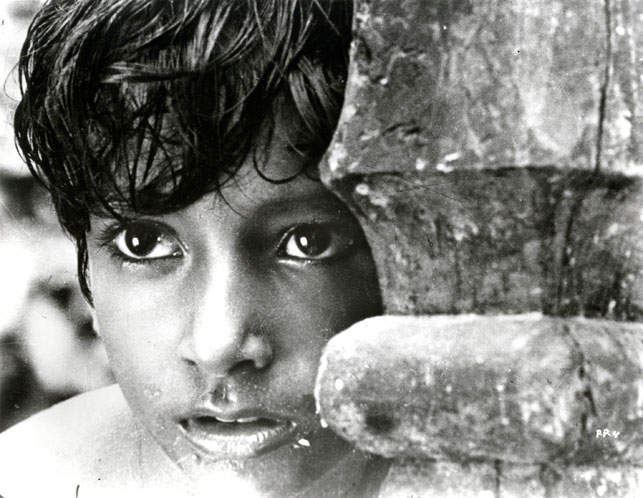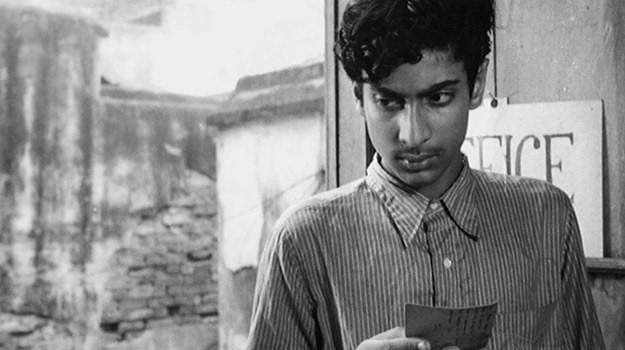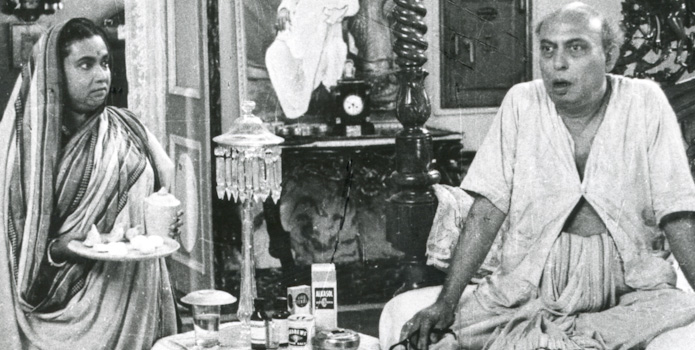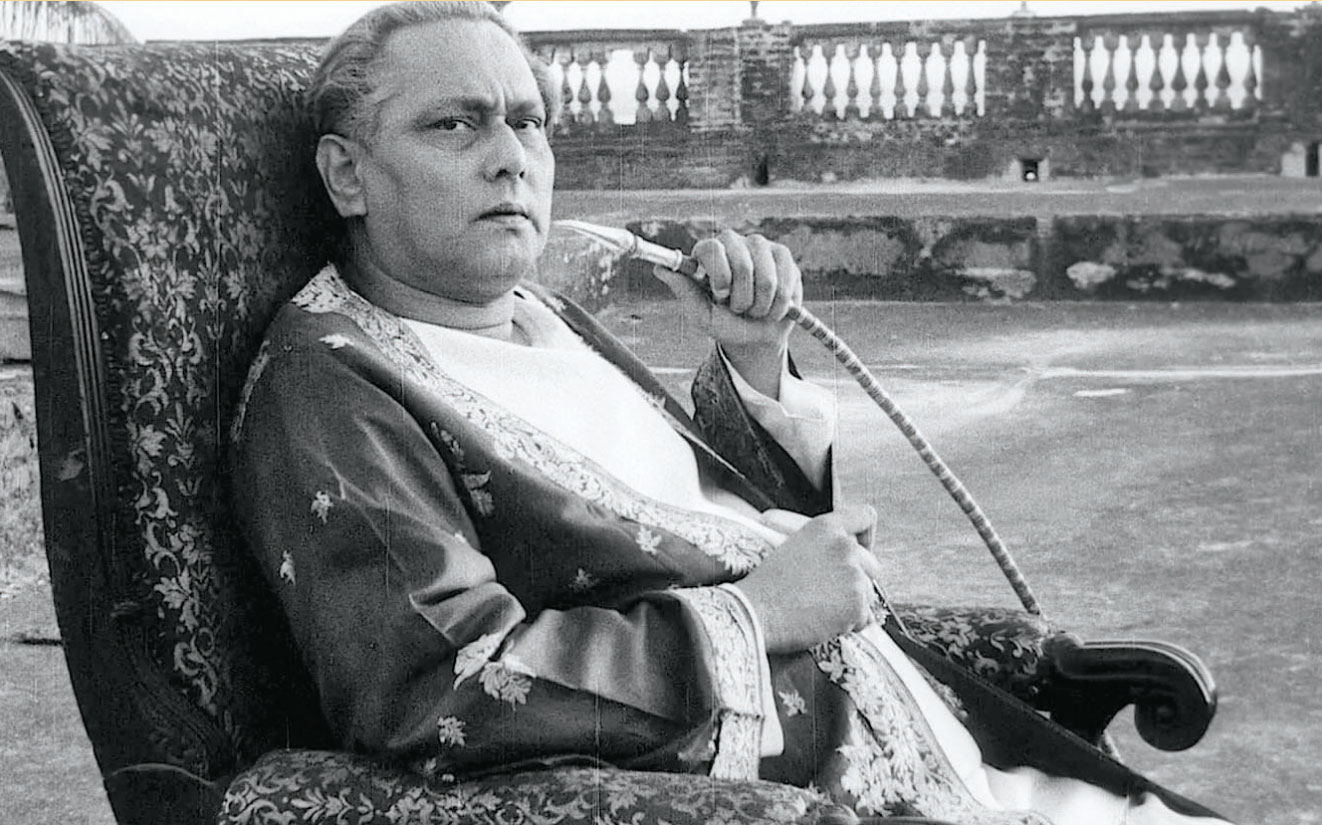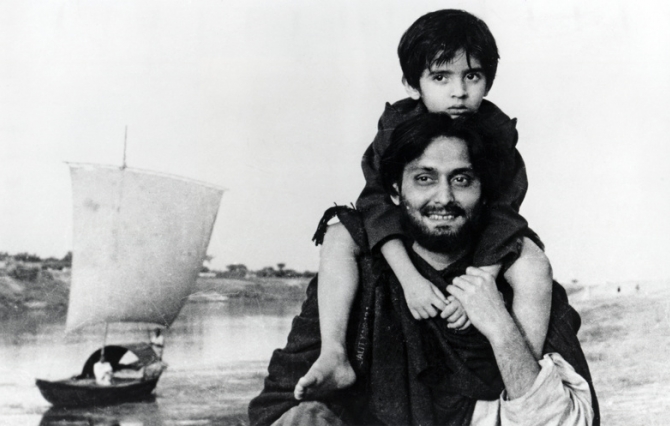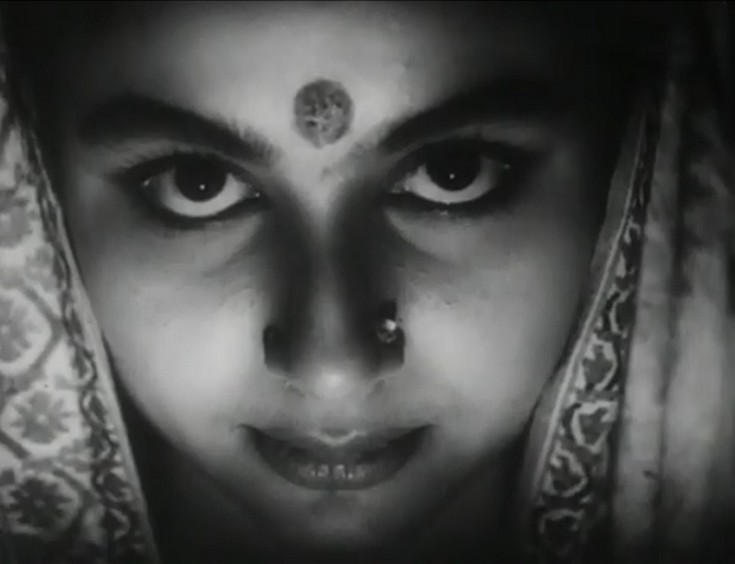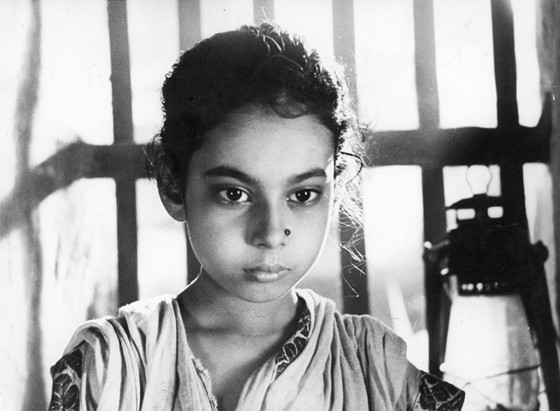It’s a well established fact that Indian taste in cinema is considerably different from Western taste. The different underlying notions of cinema in each of these cultures are the cause of this diversity in taste. But then there is an exceptional talent with a vision and scope so vast that it satisfies the tastes of cinema lovers across the globe. Satyajit Ray is such a talent. His telling of Indian stories makes him a visionary in the truest sense. He has redefined the way Indian aesthetics and narratives can be delineated on the silver screen.
Ray had a firm foundation in Indian Fine Arts, with his formal education from Shantiniketan, West Bengal, and he is an ardent follower of Western art forms. He has imbibed stories and narrative forms from his homeland since childhood but it was his exposure to Western cinema that shaped his technique. What follows is a list ranging from some of his most renowned works to his conveniently overlooked films. Taken together, they define a true auteur.
1. Pather Panchali (Song of the Little Road) (1955)
In the year of 1955, Satyajit Ray released his first film which went on to become one of the most popular and revered Indian films in the world. Before making this film Ray was working as an art director in a British Advertising Company. He had never thought of making films until he read Bibhutibhushan Bandopadhyay’s novel Pather Panchali. But the real inspiration came from the treatment of De Sica’s Bicycle Thief, which was shot on location with non-actors playing lead roles.
Pather Panchali showcased Ray’s ability to capture cultural nuances while keeping the drama and narrative intact. His skill as a director is highlighted in scene after scene, capturing the barren beauty of the Indian village, the phenomenon of discovery, haunting revelations about death, loss, desperation, longing and the intricacies in relationships. While he keeps his visuals natural and true to the setting of the story, some of the scenes are exquisitely shot.
The discovery of Train through white fields of Kaas is one such splendidly shot sequence. For every cinema enthusiast who craves pure drama and humanistic story telling, this masterpiece is a must-see. Pather Panchali will always remain a milestone in Indian cinema.
2. Aparajito (The Unvanquished) (1956)
After the success of Pather Panchali, Ray decided to take the story of Apu forward. This time it’s a coming of age story involving culture shock. In Aparajito the setting of the story is Varanasi and a village in Bengal, unlike Pather Panchali. This gave Ray a chance to insert his personal sensibilities into Apu’s story. Ray was raised by his mother in Calcutta. Even though it resonates with Ray’s life, the story encompasses final chapters from Bibhutibhushan Banerjee’s Pather Panchali.
Aparajito acts more as a link between Pather Panchali and Apur Sansar, both of which were better received than this sequel. The film won a Golden Lion at Venice Film Festival, even though it was not as successful as its predecessor. Aparajito can be characterised as a tragedy, even though it does not conclude Apu’s story. Some of the scenes, such as death of Apu’s father are haunting and disturbing. This is one of Ray’s most autobiographical films.
3. Parash Patthar (The Philosopher’s Stone) (1958)
A working class clerk accidentally finds a stone which can transform anything that it comes into contact with into gold. However fantastical the story may sound for Ray’s filmography, the end product is believable, endearing and genuinely humorous. It may seem unexpected since Ray’s previous film was the sequel to Pather Panchali, Aparajito. However, his ability to swiftly shift from one genre to another, one form to another, is what makes him a true genius.
Parash Pathar can be categorized as a fantasy-comedy, but it is layered with economic predicaments that occur due to premise of the film. The film could be easily seen as a sneak peek into Ray’s sense of humour and his ability to make non-serious films. Even though it is considered only a minor film in Ray’s filmography, it clearly demonstrates the variety of stories in his arsenal.
4. Jalsaghar (The Music Room) (1958)
Indian cinema is known for song and dance numbers, but rather than serving the story, they are known to distract from the flow of story. But here, when Ray handled the music, he created an intense drama layered with classical Indian music, a detailed depiction of indulgent Zameendar’s (Landlords) life, and haunting yet engaging performances by all lead actors. The film is about an aging, decadent Zamindar (Landlord) who is so self-involved and self-indulgent that he is not paying attention to his property which has fed him all his life. He is not bothered about the abolishment of Zamindaari system by the newfound Government of India.
Jalsaghar is the testament of meticulous set design in cinema – designs which were largely done by Ray himself. Each set consists of a character who sets the mood of each scene. The palace used was Roy Choudry’s palace in Nimtita Raajbari. Another spectacularly shot film by Ray’s frequent collaborator, Subrata Mitra. With this film Satyajit Ray proved that he is equally adept at handling all the mainstream elements of cinema such as extravagant characters, music and sets. Nonetheless this film showcases Ray’s ability to create a mood-based story.
5. Apur Sansar (The World of Apu) (1959)
The third and final instalment in Apu trilogy is the new beginning as well as the inevitable end of Apu’s story. After making two films on Apu it was always expected that Ray would finish the story with Apu, completing the circle and coming to a point where Pather Panchali starts, meeting his own child and rediscovering his childhood. This film was released three years after Aparajito. Since then Ray had ventured on to other stories and had gathered fresh ideas for his story telling.
Sharmila Tagore , who plays Apu’s wife, debuted with this film. She went on to become one of Ray’s most frequent collaborators and also one of the most popular actresses in Indain cinema. Another actor who went on to become Ray’s most frequent collaborator was Shoumitra Chatterjee, who plays Apu. With this film Ray got a chance to show a directionless protagonist who represents contemporary youth in India. The final scene shows Apu reuniting with his son and walking away from the camera is an apt climax to this story of loss.
6. Devi (The Goddess) (1960)
There are very few films in India which focus on the hollow rituals that push innocent lives in to misery and depression. Devi is a relevant piece of work even today, after five decades, because of its theme of blind faith and superstitions. It’s a story of a young girl who is married in to a house with strong religious convictions. Her father-in-law is a devoted follower of goddess Kali. While her husband is away at school, one night her father-in-law has a dream of Kali indicating that his daughter-in-law is an Avatar of the goddess. This changes his perception about his daughter-in-law and sets in motion a chain reaction in which other people around start worshiping her.
The film is about the loss of innocence due suffocation. The idea of deification and man’s efforts to create legends is vividly shown through strong characters and honest portrayal of gullibility in Indian society. It also focuses on the notion of male dominance which runs counter to the idea of a deity who is a goddess.
7. Teen Kanya (Three Daughters) (1961)
One of the best writer-director collaborations in cinema is Satyajit Ray directing stories of Rabindranath Tagore, who was the first non-European to win a Nobel prize for literature. Teen Kanya is made up of three episodes of a story which have common central characters, which join all three stories.
It won the Presidents Silver Medal for Best Film. Even though the international release had only two episodes namely, The Postmaster and Samapti (The Conclusion), in India it has a third episode called Monihara (The Love Jewel). This is one of the least celebrated films of Ray and tends to need more than one viewing to sink in.

